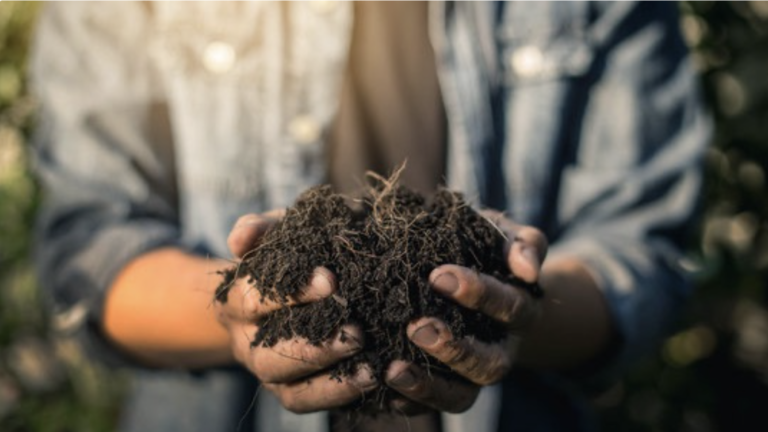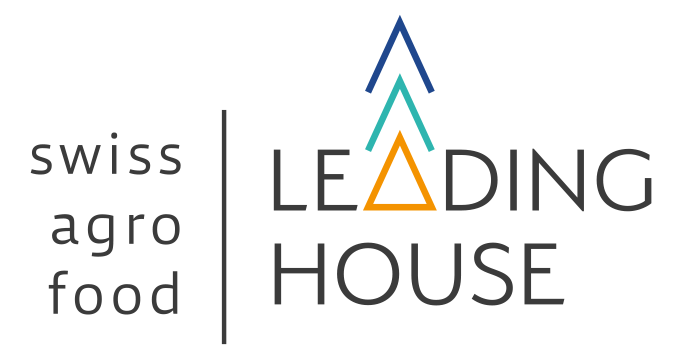Help farmers to close the loops of fertilisers
by Hélène Iven

The use of chemically synthesized fertilizer (“chemical fertilizer”) corresponds to the idea of the linearity of the food chain and results in high loss of resources. Industrial agriculture, as we know it today, encourages farmers to use chemical fertilizer, which production contributes to approximately 1.2% of the world’s total greenhouse gasses emissions on an annual basis (EIA, 2010). Ironically, most farmers already have available, on-farm resources to fertilize their field organically: animal manure, compost, crop residues, etc. (“organic fertilizer”). The problem is that organic fertilizer is relatively inefficient: 40% to 70% of the organic fertilizer applied on the field is lost without the crop absorbing it. Moreover, it is challenging to finetune the fertilizer application and timing with the plant needs and keep surpluses small, mainly because their availability to the plant depends on the soil type and field conditions (Web et al. 2010). Further, inefficient use of fertilizers can increase the risk of unwanted losses in the form of ammonia volatilization, nitrogen (N) leaching, emission of greenhouse gasses (e.g. nitrous oxide), or runoff of phosphorus (P). For this reason, it is important for the agri-food chain to find solutions for closing the fertilizer loop and helping farmers to optimize their use of organic fertilizers.
The first challenge related to optimizing organic fertilizers is that most of the organic fertilizers are not directly available to the plants and that we don’t really know when it will be released over the growing season. Farmers can add organic fertilizers in various forms (compost, liquid manure, dung, commercial organic fertilizer, mulching with legumes, etc.). However, most of the nutrients in organic fertilizers are bound to carbon molecules and, therefore, not directly available to crops. To access these nutrients, soil microorganisms (e.g., bacteria and fungi) and plant roots produce extracellular enzymes that release nutrients from the fertilizer and soil organic matter by a biological process so-called “mineralization”. The rate at which N and P are “mineralized” depends on the chemical composition of the organic fertilizer, soil organic matter, and soil enzymatic activity.
This mineralization is our second challenge. The mineralization is the process that releases plants’ nutrients from various sources of organic matter (soil organic matter, organic fertilizers, crop residues, etc.). It is the predominant driver of nutrient availability to crops throughout the growing season. Therefore, predicting nutrient release from these pools is essential to sustainable nutrient management. Accurate mineralization estimates can help farmers apply the right type and amount of fertilizer at the right time and optimize crop yields with minimal environmental losses. However, farmers do not have access yet to measurements of mineralization of nutrients yet.
Our idea is to help farmers to optimize the fertilizer application timing and amount by providing an estimation of the release of the nutrients based on enzymatic activity. The prediction and further agricultural advice (cover crop type, type of fertilizer) would be delivered via an app on the customer account. By reducing the losses of fertilizer, we aim at improving organic farmer’s yield by 10% in the long-term, and to foster the conversion to organic agriculture.
Our idea is to help farmers to optimize the fertilizer application timing and amount by providing an estimation of the release of the nutrients based on enzymatic activity. The prediction and further agricultural advice (cover crop type, type of fertilizer) would be delivered via an app on the customer account. By reducing the losses of fertilizer, we aim at improving organic farmer’s yield by 10% in the long-term, and to foster the conversion to organic agriculture. This project aims – in cooperation with the group of sustainable agroecosystems at ETHZ – to develop a proof-of-concept showing how soil enzyme activity measurement can be used to assess nutrient mineralization.
Measuring the enzymatic activity rate in real-time can inform farmers about the most optimal type,amount and timing of fertilizer application. Until recently, enzyme activity measurements could only be done by sending soil samples to the laboratory – not in the field – which provided unreliable data since it changed the natural soil conditions. However, at the ETH spin-off – Digit Soil we made it possible to perform real-time and on-site measurements of soil enzymatic activity. We developed a sensor that measures soil enzymatic activity and enables fast collection of a high amount of standardized and comparable data at a low cost. Five separate studies have validated the technology under laboratory conditions.
The alternative to measuring the mineralization rate would be to measure the number of nutrients available for the plant contained in the soil at a one-time point (“Mineral nutrients measurements”). This, however, is a static parameter. Farmers would base their fertilization plan on one day, while nutrient availability can increase by a factor of ten the day after (Codruta Maris 2021). Therefore, mineral nutrient measurement cannot give farmers sufficient information to make an efficient fertilization plant.
Our product targets both soil-health- and yield-driven farmers and answers to the pain of both conventional and organic farmers. Indeed, using organic fertilizers will become continuously attractive financially. They can help reverse cropland degradation – which drives the crop yield down – and have become cheaper than chemical fertilizers due to increasing energy prices and wars. Key market drivers are cropland degradation – the UN predicted additional soil degradation of the size of South America by 2050 – rising costs of chemical fertilizers, and increasing legislation for less polluting agriculture.
With our product, we will penetrate the Swiss market – valued at CHF 85 M – in 2024 and then explore other markets, such as the European market – valued at CHF 30 M – in 2025, before a growth phase where we will scale internationally. We target a market of 16 M in 5 years, with 10% of the Swiss market and other revenues at the international level. In addition, we plan to enter 5% of the European market in 10 years (see our business plan for more details).
Our go-to-market strategy is to partner with farmer associations and other stakeholders in this sector. For instance, we already have contacts with the “Schweizer Bauer Verband”, Fenaco and Agroscope, in Switzerland. Further, we are already doing a pilot with a Swiss farm called “HofLabor – Mosaik Design” in Zürich to monitor their soil health.
As the main entry barrier is the acceptance by farmers of using an app (farmers that have greenhouses are pretty used to it, but outdoor farmers are less so), we are already planning to co-design the user interface with farmers. We already have a mock app we are testing with farmers.
Our idea would enable farmers to decrease their dependency on chemical fertilizers, generate higher yields by regenerating soil and improving fertilizer efficiency that at the same time reduces the pollution.
Therefore, it will answer to five of the sustainable development goal (“SDGs”) created by the united nations:
SDG 2: Zero hunger – we decrease farmer’s dependency on chemical fertilizer (primarily produced in Ukraine and Russia) and increase soil health by adding organic matter;
SDG 6: Clean water and sanitation – we reduce the water pollution linked to an excess of fertilizer;
SDG 12: Responsible consumption and production – we improve the food quality and reduce the impact on the environment;
SDG 13: Climate actions – we reduce nitrous oxide emissions, which contribute to 4% of the world’s emitted greenhouse gasses;
SDG 15: Life on land – we promote soil health, which is the habitat of ¼ of the Earth’s biodiversity.
COMPETENCES WE BRING IN:
- Innovative device measuring soil enzymatic activity in real-time.
- Network of farmers willing to test the early versions of the device.
- Hand-on experience on a farm.
- Experience with measuring soil nutrients and nutrients’ loss pathway.
- Experience with building predictive models.
To take our idea further (after this first proof-of-concept) and test the first model in the field, we would require an access to an experimental field (i.e. from Agroscope or FiBL), best would be to have access to a field where nutrients content is anyways regularly measured.
Fundraising of CHF 300 for financing the development of the fertilizer optimization product using the proof-of-concept as justification.
Validation of the predictive model in greenhouse experiments and in the field.
Pilot with farmers to get customers’ feedback and re-iterate the prototype based on the pilot’s result.
